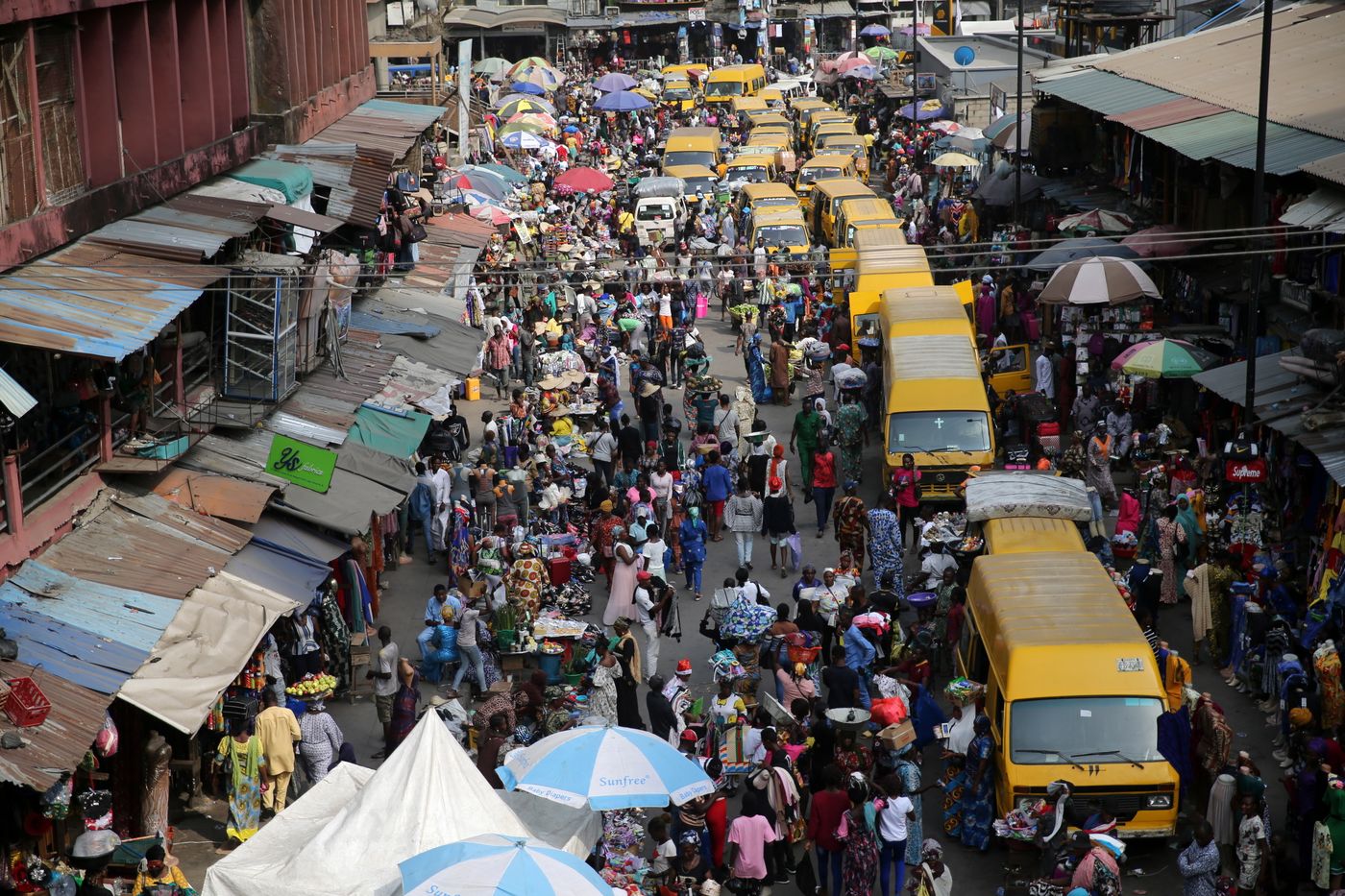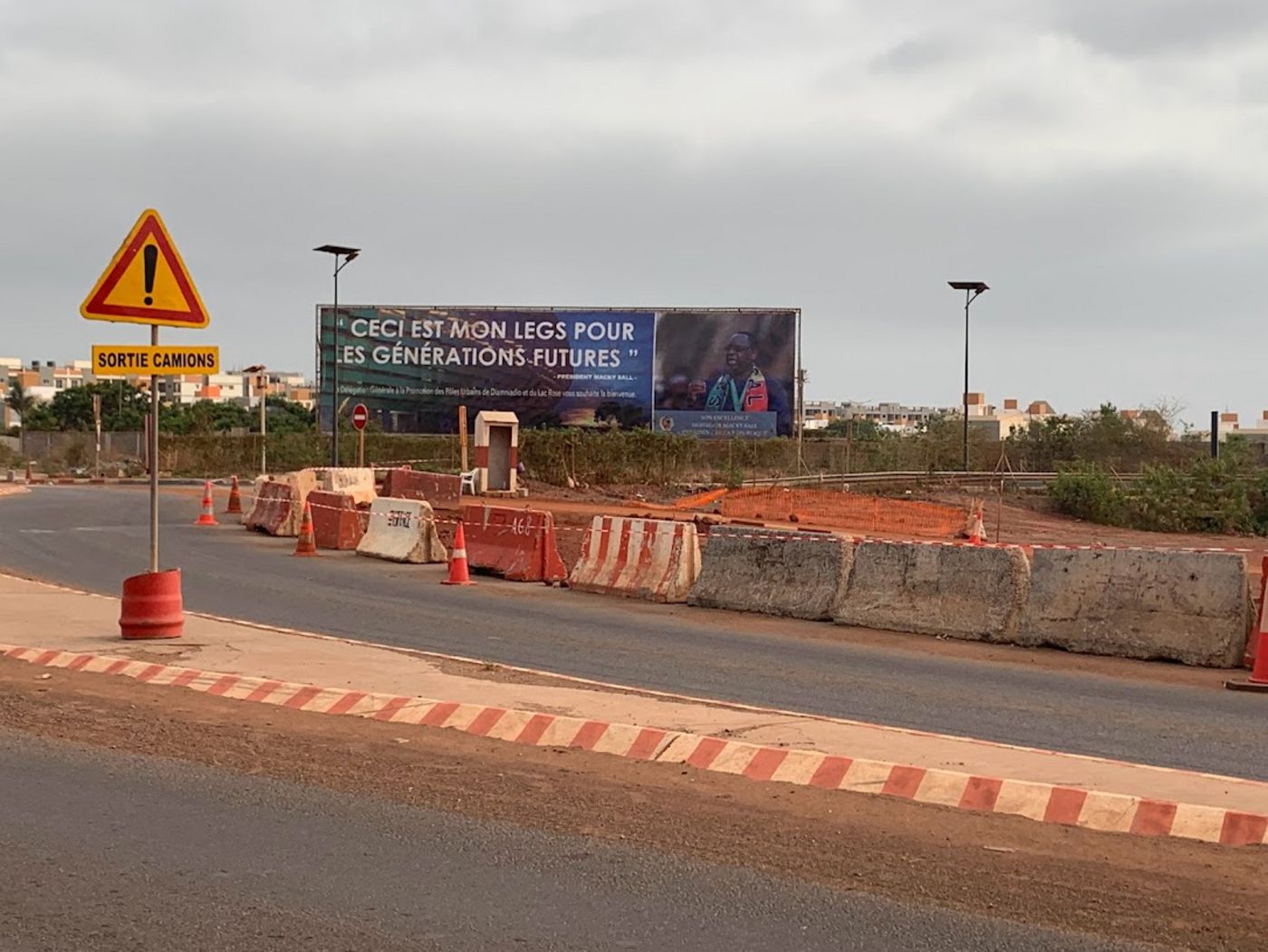Policy Workshop III: The Politics of Urban Governance in Africa
Megatrends spotlight 2022 18, 08.11.2022Africa’s rapid urbanization has left experts astonished and policymakers facing significant challenges. In our latest Megatrends Afrika policy workshop, urban governance experts discussed possible pathways to inclusive urbanization.

Lagos, Nigeria: People visit the Isale-Eko market one day before Christmas 2021.
© picture alliance / EPA | Akintunde Akinleye
Africa is the world’s frontrunner in urban growth. Since 1950, its urban population has increased 2,000 per cent (from 27 million to 567 million in 2015) and continues to expand rapidly to this day. As the continent’s population grows (it is expected to double by 2050), so do its cities – in both number and size. Over the next 30 years, another 950 million people will live in these metropolitan areas. Especially small and medium-sized towns are ripe for a makeover, one that will transform them into urban hubs and larger cities.
Shaping a just and sustainable urban future
Such rapid growth comes at a cost, however. It is not unlikely that the pace of urbanization will exceed that at which policymakers come up with initiatives to deal with, shape and govern the transformation. Ill-governed urban spaces leave many citizens behind, as is evident from the glaring inequality that prevails in many African cities and the daily struggles of the Lagosians, Kampalans and Dakarois. Few benefit from the economic opportunities afforded by the cities, while most urban dwellers in Sub-Saharan Africa live in the informal settlements that surround the main urban centres. They have no or only limited access to basic services and are confronted with various socio-economic challenges.
Against this background, policymakers, city planners and development actors are all busy shaping an alternative urban future: they launch initiative after initiative to create sustainable, inclusive and prosperous cities. Much of the debate centres on investment and capacity building. Yet these technical aspects are only half the story; the other half comes down to politics. Which governance approaches and institutional frameworks can facilitate pathways to inclusive urbanization? Who is involved and who is being left out? To whom are local governments accountable? At our latest policy workshop, which took place on 20 October, we discussed these questions with urban governance researchers Sina Schlimmer (IFRI) and Michael Roll (IDOS) as well as urban economist Astrid Haas.
Building ‘new cities’ – a controversial top-down approach
Sina Schlimmer joined us from Paris to share her research findings on the new urban hub Diamniadio in Senegal. A flagship project of President Macky Sall, Diamniadio was originally intended to relieve the overcrowded Dakar by opening up a new urban residential space.
So far, the project has not lived up to that intention. Damniadio lacks urban life. Few construction projects are finished, even fewer inhabited. Urban life happens only during working hours. People commute to the new city while continuing to live in Dakar. The capital is becoming the “bedroom for citizens working in Diamniadio”, Schlimmer maintained.
Diamniadio is just one example of a larger trend. Tanzania, Ghana, Nigeria and Kenya are building cities from scratch, too. The artificial top-down construction of urban hubs is a controversial issue among urban governance scholars.
Schlimmer noted that in the case of Diamniadio, civil society actors were virtually excluded from the planning and implementation process. “It’s the political and territorial footprint of Macky Sall,” who, she argued, had created new institutions to centralize power away from the local to the presidential level, especially with regard to land allocation. As a consequence, social tensions had increased and grey zones in governance had emerged, while urban dwellers had only limited appropriation of the project.

Banner at Urban Hub Diamniadio (UHD) showing President Macky Sall and his slogan "This is my legacy for future generations".
© Sina Schlimmer
Lagos – between urban vision and social reality
In his presentation, Michael Roll unpacked the urban reforms that have taken place in Lagos since 1999. At the turn of the millennium, the Nigerian metropolis was a commercial hub, albeit one largely in decay. Since then, major infrastructure projects have been launched to resuscitate the city. The construction of new highways and bridges has been accompanied by urban public service reforms to reorganize waste and tax collection, among other things.
However, these reforms have benefitted only a minority of urban dwellers. Most Lagosians live in slums and have remained unaffected by the reforms or even suffered under them. At the same time, the subjective, de facto experience of neglect in urban governance has had a negative impact on political participation. Voter turnout is particularly low in Lagos. Those living in informal settlements are excluded from the political system and have trouble making their voices heard and their interests known. As public concerns tend not to be addressed, people take to the streets in protest. And, Roll recalled, the government reacts by violently cracking down on these movements, as in the case of the #EndSARS protests.
Roll went on to discuss a number of factors that could contribute to change in such settings: (1) open-minded and sympathetic political elites that have local networks and perhaps a background in social movements; (2) a vision for the city that is based on its unique life and culture; and (3) strong social movements that advocate change.
No silver bullet in African city financing
Finally, urban economist Astrid Haas reminded us that it is hard work for cities to raise own-source revenues to finance sustainable urbanization. “There is no silver bullet”, she noted. Administrative reforms could be a consequential first step towards building a city’s creditworthiness, rather than prioritizing much more complex policy reforms that involve a number of different actors across the various levels of government.
Moreover, policymakers and development actors seem to focus predominantly on bankable projects. Haas identified two problems with that approach: (1) not all projects will be bankable, especially when it comes to services provision, an area that needs public funding; and (2) the occasional bankable project cannot turn the tide for a city. Rather, cities need a transformative pipeline of projects as well as continued financial resources – from the planning to the maintenance stage.
Haas reiterated that the debate centres on major metropolises like Lagos and Kampala. But the fastest-growing urban areas in Africa are small and medium-sized towns, so-called secondary cities. They need sustainable investment now so that they do not face the same challenges as their larger sisters.
What are the pathways to further inclusive urban governance in Africa?
There is no easy fix for addressing the negative consequences of a rapidly growing urban landscape. All participants agreed that current initiatives often fail to cater to the needs of citizens and affected communities.
Donors need to start working in a cross-sectoral manner in order to address the identified challenges. Instead of just creating something new, stakeholders should integrate projects – especially large-scale construction projects – into the existing landscape and setting of a city. It is essential to avoid situations in which ghost towns stand alongside densely populated metropolises.
To this end, three recommendations were made: (1) government should involve both civil society and the private sector in these projects; (2) boosting administrative capacity would enable impacts more quickly as opposed to complex policy reforms; and (3) project cycles should match the time horizon of urban planning and adapt more to the long-term budgetary needs of cities.